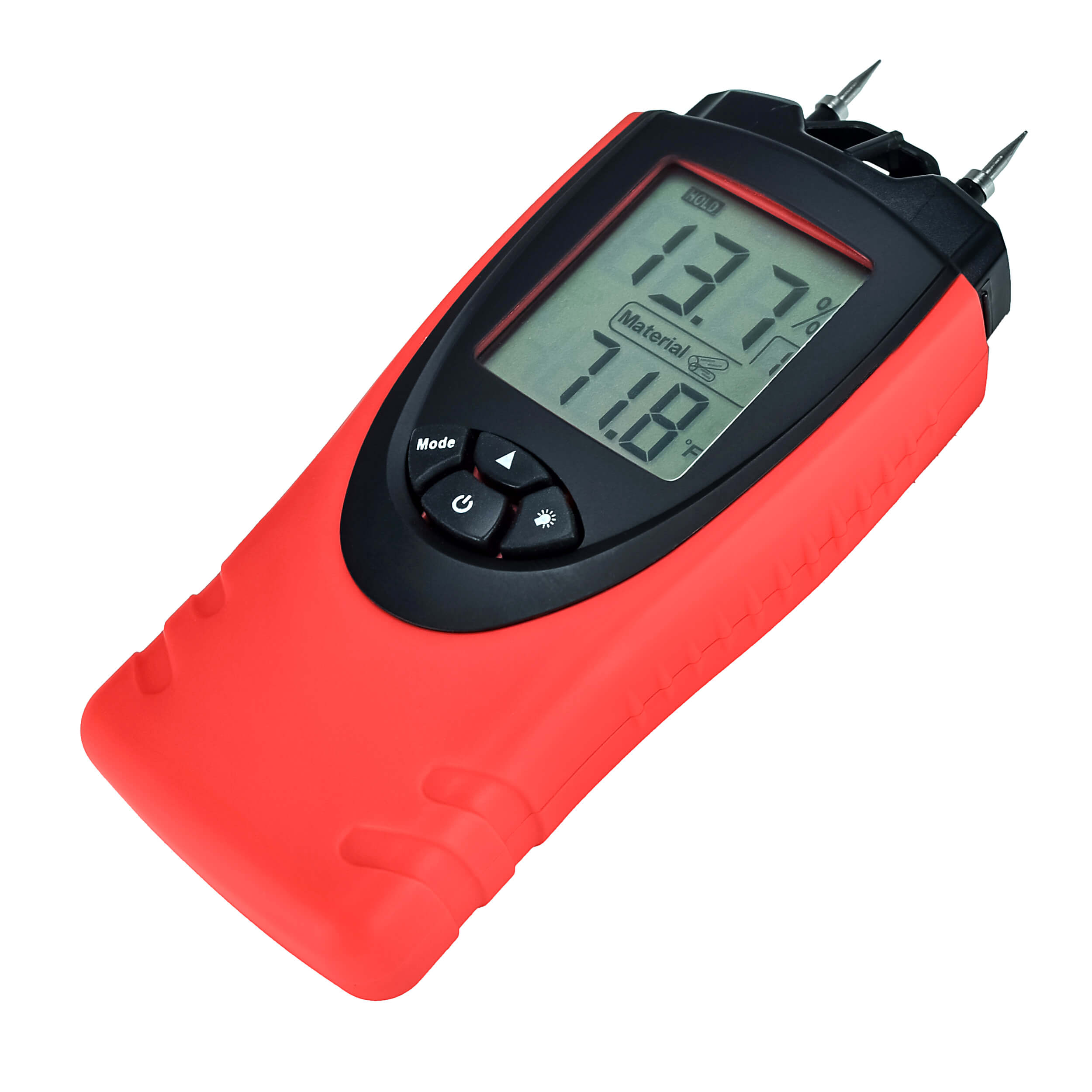Why Every House Owner Needs a Moisture Meter: Trick Benefits and Features
Why Every House Owner Needs a Moisture Meter: Trick Benefits and Features
Blog Article
The Ultimate Guide to Moisture Meters: A Comprehensive Overview and Just How They Can Save You Money
In the realm of building maintenance, construction, and various markets, the value of precisely determining dampness degrees can not be overemphasized. Dampness meters serve as important devices in identifying and monitoring moisture content in materials, assisting in avoiding pricey damages and ensuring the top quality of items. Recognizing the subtleties of different types of wetness meters, their applications, and the potential cost-saving advantages they use can be a game-changer for businesses and experts alike. Discovering exactly how these devices can not just improve processes yet likewise add to monetary cost savings is a journey worth getting started on.
Kinds Of Moisture Meters
One common type is the pin-type wetness meter, which measures the electrical resistance between two pins put right into a product. Pinless wetness meters, on the other hand, use electromagnetic sensing unit plates to scan a bigger area without triggering damage to the product's surface.
Moreover, there are likewise specialized moisture meters developed for particular materials like hay, dirt, or grain. These meters provide accurate wetness readings customized to the special buildings of the product being evaluated. Infrared moisture meters determine the thermal buildings of a material to determine its moisture material non-invasively, making them helpful for applications where pin or pinless meters might not be ideal. Comprehending the different kinds of dampness meters readily available can aid markets select the most proper tool for their certain wetness dimension needs.

Benefits of Utilizing Moisture Meters

Furthermore, using moisture meters can lead to enhanced power performance. By determining areas with high moisture degrees, such as leakages or inadequate insulation, changes can be made to boost power conservation and lower utility prices. In farming settings, moisture meters play a vital role in maximizing plant returns by allowing farmers to keep track of soil moisture levels and make educated watering decisions. Overall, the benefits of using dampness meters span across different markets, supplying cost-effective services and promoting far better quality assurance techniques.
Exactly How to Pick the Right Moisture Meter
Picking the proper wetness meter entails thinking about essential factors such as material compatibility, dimension array, and calibration precision. When choosing a wetness meter, it's necessary to guarantee that the meter appropriates for the details material you will certainly be testing. Different products have varying electrical buildings that can influence dampness analyses, so picking a meter designed for your material is crucial for accurate outcomes. Additionally, consider the dimension series of the wetness meter. Ensure that the meter can find dampness levels within the array required for your applications. Calibration accuracy is an additional essential aspect to remember (Moisture Meter). Opt for a wetness meter with trusted calibration to guarantee regular and exact readings. Some meters might require regular calibration adjustments, so recognizing the calibration process is important. By thoroughly evaluating these variables, you can choose a dampness meter that satisfies your requirements and gives accurate dampness dimensions for your jobs.
Correct Methods for Moisture Meter Use
To make sure exact wetness readings and optimize the performance of a dampness meter, employing appropriate methods is necessary. When utilizing a pin-type wetness meter, put the pins or probes right into the product being checked till they make full call. By complying with these appropriate techniques, individuals can depend on their dampness meter to provide credible dampness degrees, see this site helping in protecting against pricey damage or guaranteeing high quality in different applications.

Expense Savings With Moisture Meter Applications
How can the critical application of moisture meters lead to substantial cost savings across different sectors? In the farming sector, wetness meters aid in identifying the optimal time for gathering crops, protecting against excess or over-drying wetness that can affect the last product's quality.

Moreover, in the food processing sector, moisture meters are necessary for monitoring item top quality and making sure compliance with safety and security policies. By accurately determining dampness content in foodstuff, makers can protect against wasting, preserve freshness, and minimize waste, causing significant cost financial savings. On the whole, the tactical application of moisture meters is a valuable financial investment that can result in significant cost decreases and enhanced performance throughout numerous sectors.
Conclusion
In final thought, wetness meters are useful tools for measuring and detecting dampness degrees in various materials. By using the ideal moisture meter and complying with proper strategies, individuals can efficiently protect against expensive problems caused by excess moisture.
Wetness meters serve as essential tools in spotting and keeping an eye on moisture web content in materials, aiding in avoiding pricey damages and making certain the top quality of items. Infrared moisture meters measure the thermal residential properties of a material to identify its wetness web content non-invasively, making them beneficial for article source applications where pin or pinless meters may not be suitable.Dampness meters offer very useful advantages in precisely examining and keeping track of wetness degrees in diverse products and environments. In agricultural settings, moisture meters play a crucial function in maximizing plant returns by allowing farmers to keep an eye on soil moisture degrees go to website and make informed watering choices.In verdict, wetness meters are important tools for identifying and determining moisture levels in different products.
Report this page